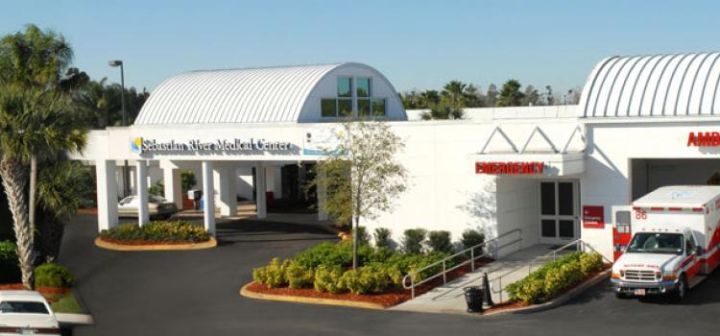
SEBASTIAN — Sebastian River Medical Center CEO Kelly Enriquez announced May 21 that the facility, working continuously with the Indian River Health Department and top national experts, and using Center for Disease Control guidelines, has successfully eliminated legionella bacteria.
The bacteria had been discovered in its water system as four cases of legionellosis, or Legionnaires Disease, were identified among SRMC patients last fall.
The previously unknown bacterium was named after an outbreak in 1976, when many people who attended an American Legion convention in Philadelphia fell ill.
Immediately upon discovering the bacteria at SRMC in September 2013, aggressive remediation interventions were put in place, and testing and monitoring of new admissions and patients re-admitted with respiratory symptoms within 10 days were begun.
The tests were negative until late April, said Enriquez, when an elderly patient tested positive. The patient was appropriately treated and recovered from the legionellosis, “but later – sadly – died, during the same hospital admission, from unrelated co-morbidities.”
At the May 21 meeting with her management team, Enriquez described the aggressive action taken by the hospital: the four cases had been immediately reported to the Indian River County Health Department. SRMC staff physicians, headed by Chief of Staff Dr. Michael Venazio, and nursing teams under Chief Nursing Officer Anna Brooks, cared for the patients who were infected, and communicated with all patients and family members.
Director of Plant Operations Larry Rosen and his crew, along with Infection Control Coordinator Rhonda Marples, RN, worked closely with the Health Department and top national experts, following CDC guidelines.
When legionella is identified as a cause of hospital-acquired infections, CDC guidelines recommend a comprehensive review for potential sources of the organism. Because the bacteria are not transmitted person to person, but when contaminated water vapor is inhaled, a review of the hospital’s water system was conducted.
The source of the bacteria was discovered to be a section of the water delivery system in an area that had not been in use for a while, Enriquez said. Under the direction of nationally known consultant Tim Keane, “comprehensive interventions were immediately implemented, including “aggressive treatment of the hospital water system.”
This, Rosen explained, involves hyperchlorinating the hot water tanks and the entire hot water system, letting them sit for a while, then thoroughly flushing all the hot water lines. This procedure, noted Brooks, does not impact the patients, other than a brief shower restriction due to the hyperchlorination process.
Monitoring of the system, and comprehensive water sample testing, Rosen said, has been ongoing, based on CDC parameters. Treatment focuses on three basic factors: chlorination levels; oxidation reduction potential, and water temperature. Currently the chlorine monitoring is done manually, Rosen said, but will be done automatically upon the arrival of new equipment, expected any day now. The water testing is done twice a week and samples are sent to the CDC lab in Waycross, GA, monthly.
Also ongoing will be the monitoring of patients with respiratory symptoms, through the SRMC infectious disease department.
Most people exposed to the bacteria don’t get sick, but those who do will have pneumonia-like symptoms. There are an estimated 8,000 to 18,000 hospitalizations for the disease each year, said Venazio. Because the bacteria is so common in the environment, the disease is likely under-diagnosed and more common than it appears. The most susceptible individuals will often also have other chronic conditions such as heart and lung issues, cancer, recent surgery, even alcoholism, all of which can compromise the immune system and possibly mask the underlying symptoms of legionella.
“Everyone here,” said Enriquez, “deeply regrets this issue and continues to be totally committed to our patients’ safety and care. We have remedied the issue with very aggressive action and want people to be more knowledgeable about this common, environmentally-caused pneumonia, in addition to sharing what we’ve learned with other area hospitals.”



